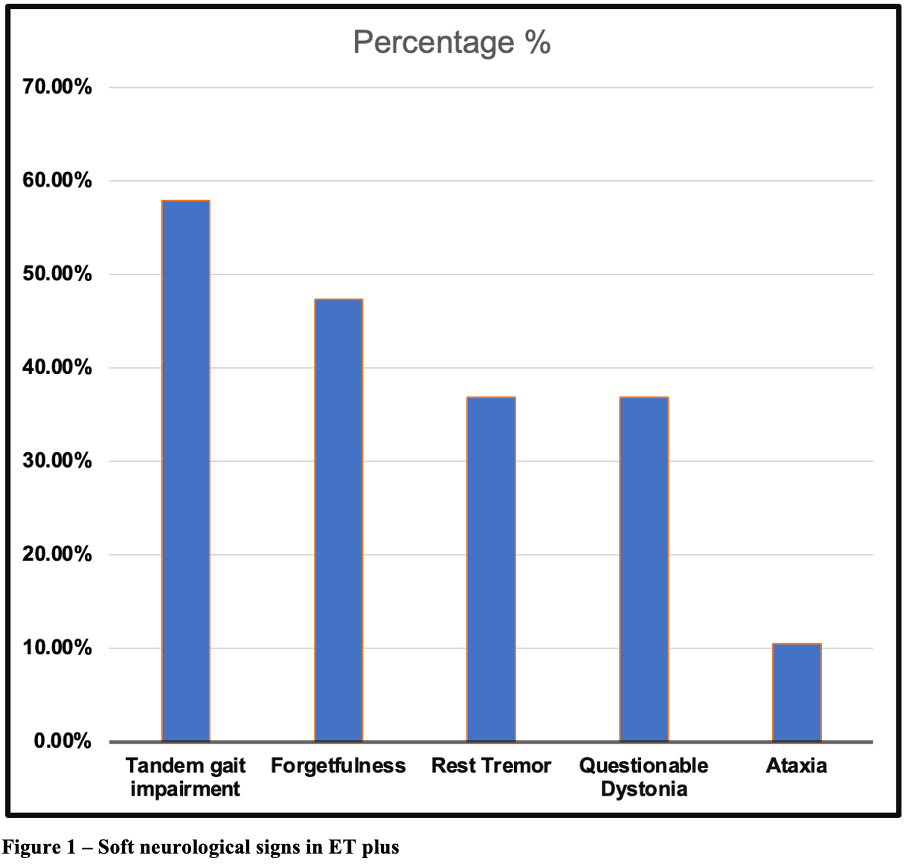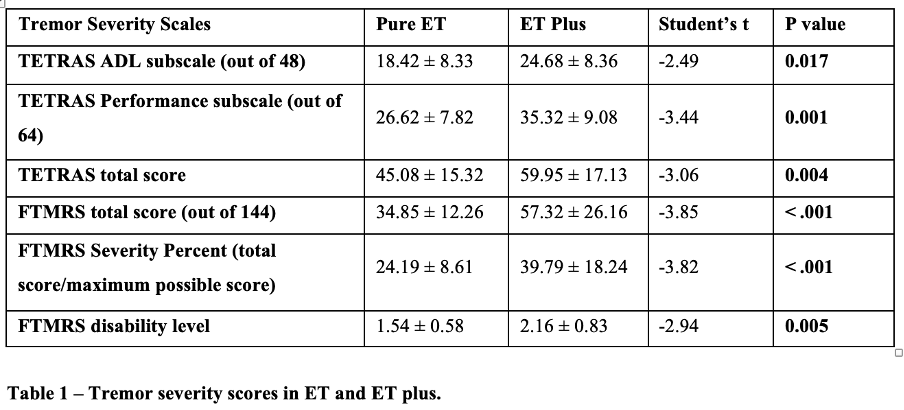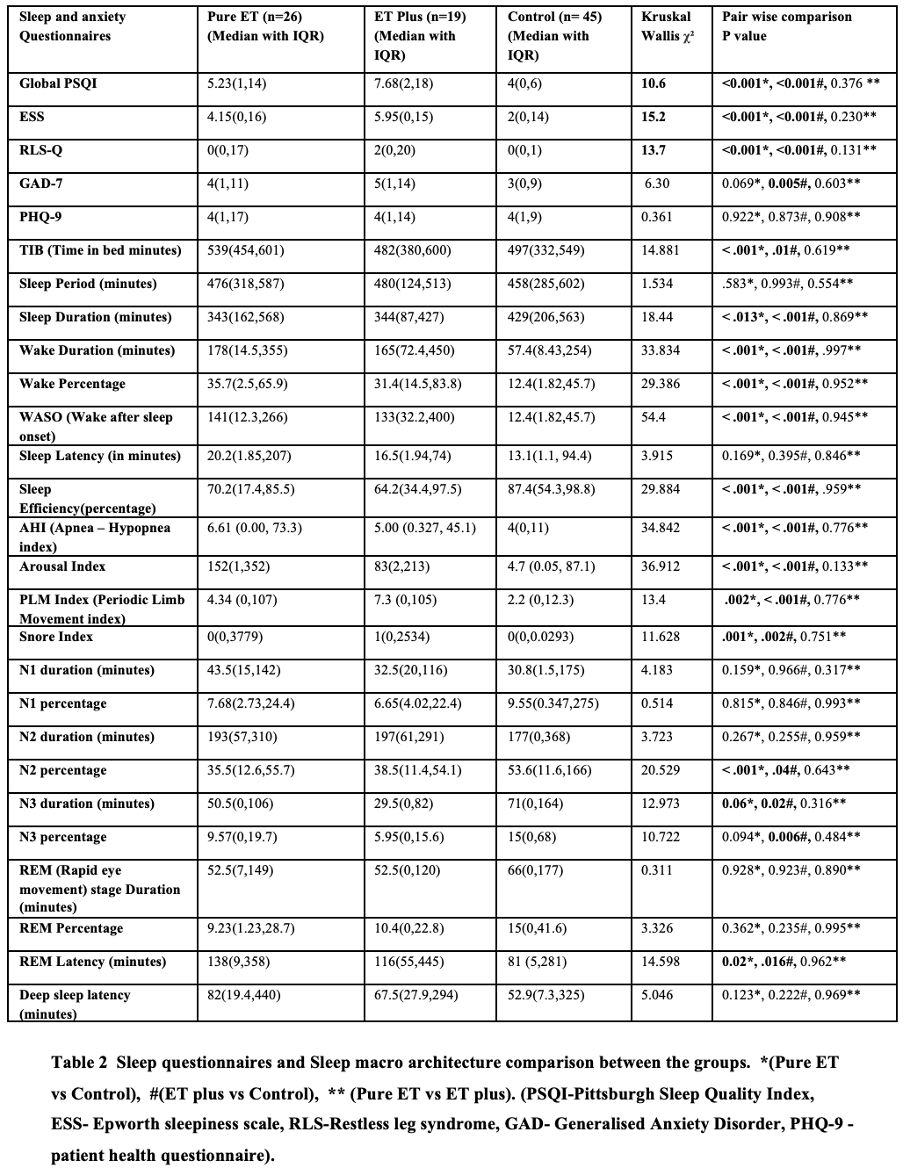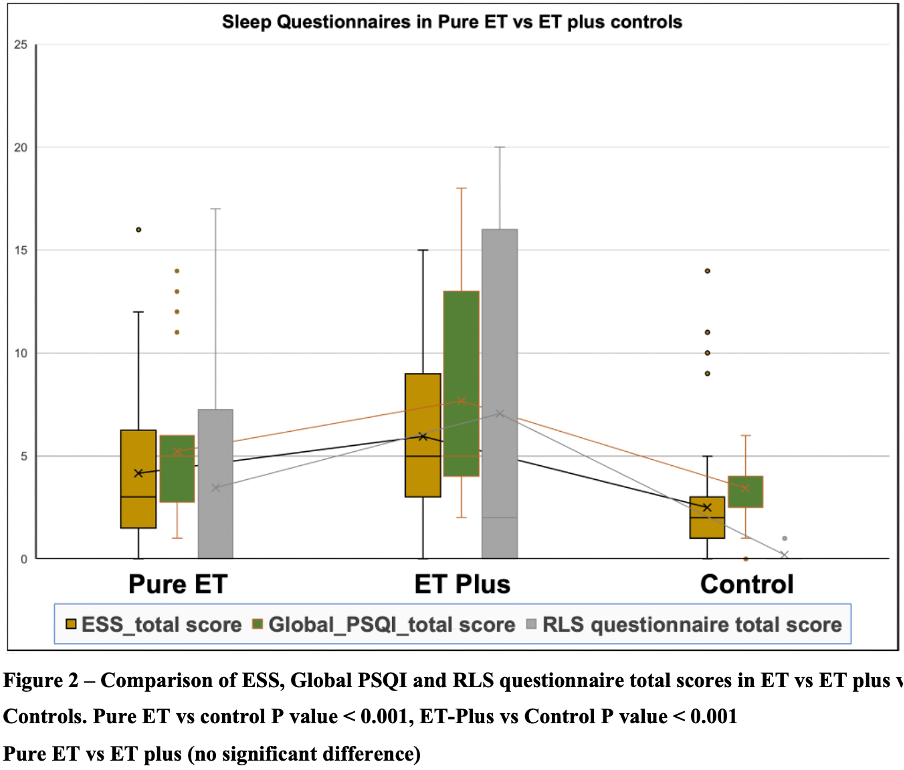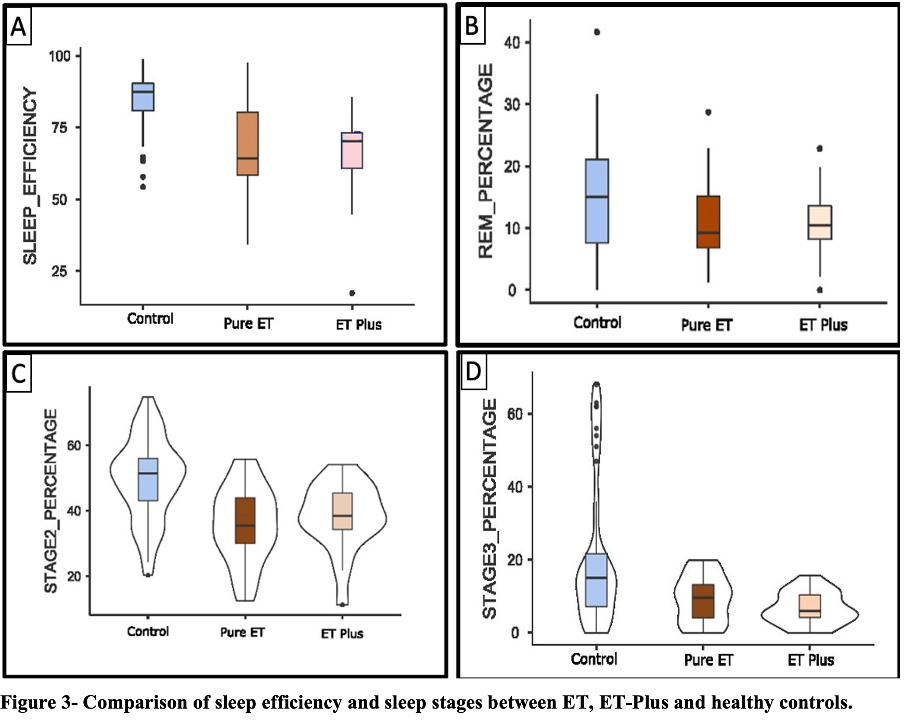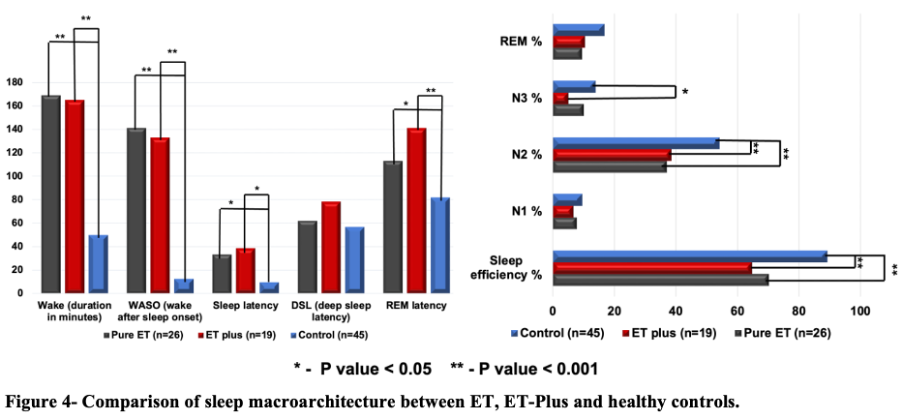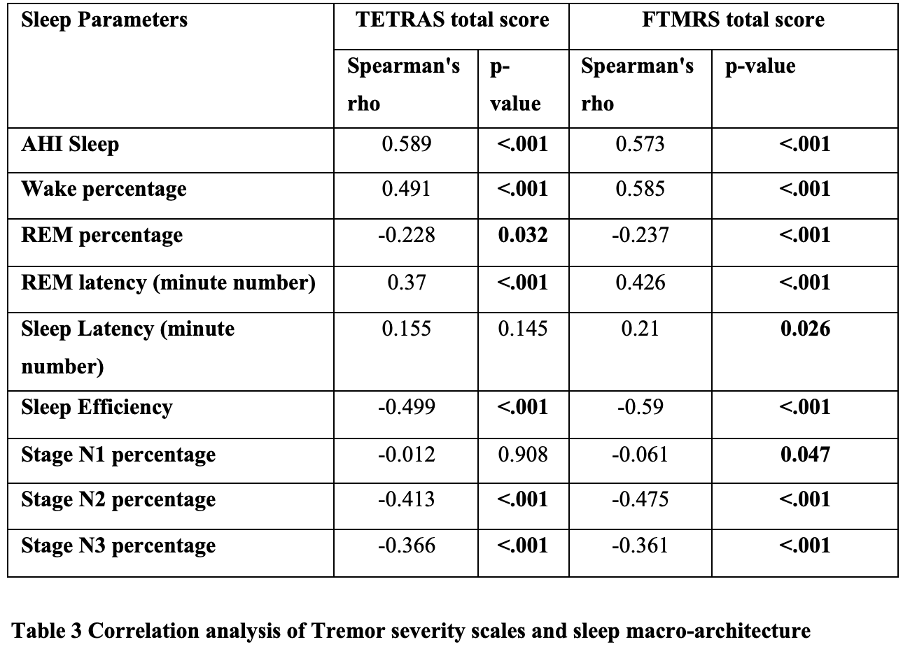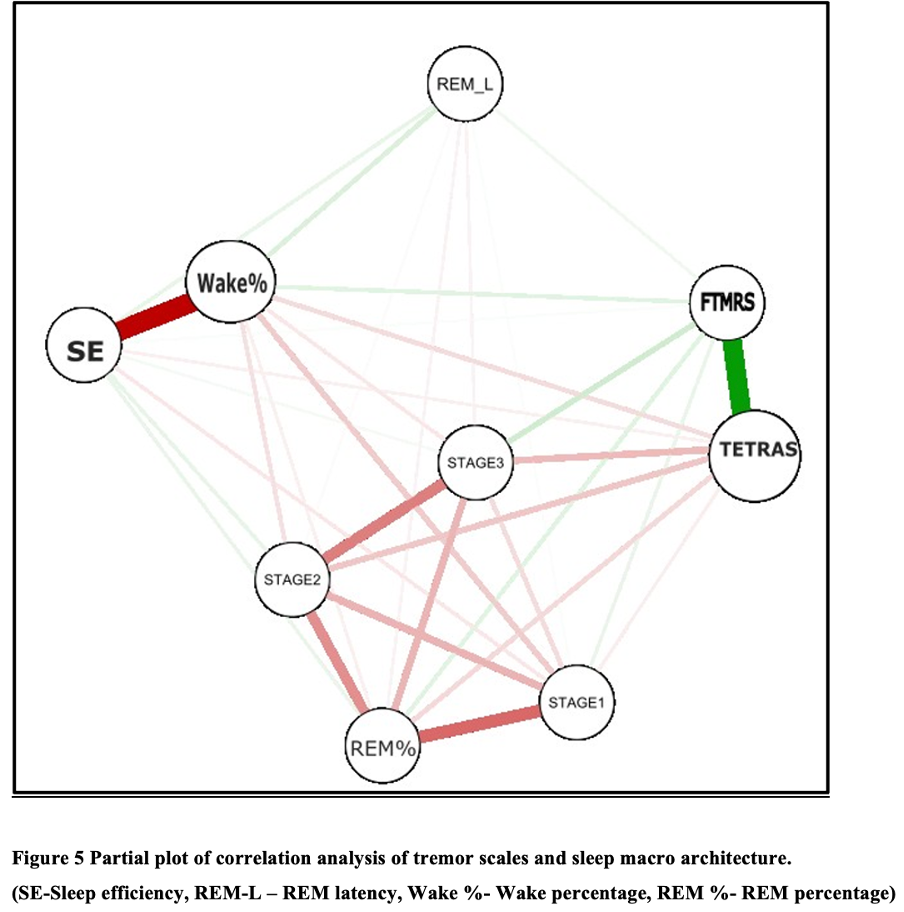Category: Tremor
Objective: This study aims to assess sleep disturbances in Essential tremor (ET) and its variant, ET plus, compared to healthy controls using Polysomnography (PSG), and explore the relationship between tremor severity and sleep parameters and the correlation between subjective and objective sleep quality measures.
Background: ET and ET-Plus patients display varying tremor severity and additional neurological symptoms. Sleep disturbances, like poor sleep quality, sleep apnea and restless leg syndrome (RLS) are prevalent in ET. There is limited research on sleep architecture in ET patients. Investigating tremor severity, subjective sleep measures, and PSG can elucidate their intricate relationship in ET and ET-Plus.
Method: This cross-sectional observational study was conducted at NIMHANS, Bengaluru (India). Patients were diagnosed based on IPMDS criteria (1). Tremor severity and sleep profiles were assessed using standardized scales and questionnaires and underwent overnight PSG. PSG data was analyzed according to AASM 2017 guidelines. Statistical analysis was performed using R Studio.
Results: In this study, we recruited 45 patients (26 ET, 19 ET-plus) and controls with mean ages of 49.4±15.5 and 40.8±9.23 years, respectively. ET-plus patients were elderly (46.8 ± 11.1 years) compared to ET patients (30.8 ± 16.7 years). In ET-plus patients, tandem gait impairment (57.89%) was the most common soft sign, followed by forgetfulness (47.36%), questionable dystonia (36.84%), rest tremor(36.84%) and bradykinesia(0.05%)(Figure 1). The TETRAS and FTMRS total scores and subscores showed statistically significant higher tremor severity in the ET plus subgroup(p-value <0.05)(Table 1). Both groups showed poor sleep quality, increased daytime sleepiness, RLS, and RBD(PSQI, p = 0.001) than controls, with ET plus showing greater impairment(Table 2, Figure 2).PSG supported these observations(Table 2,Figure 2,3,4). Correlations between sleep parameters and tremor scales (TETRAS and FTMRS) were significant (Table 3, Figure 5). A positive correlation of ESS with BQ-SA scores (r=0.545, p<0.001) and AHI (r=0.342, P value 0.022) was noted.
Conclusion: Sleep disturbances are common in ET and ET-plus compared to controls, with ET-plus exhibiting greater disability and poorer sleep quality than ET. Sleep disturbances are an indirect marker of increased neural dysfunction in ET plus and should be evaluated for better clinical outcomes.
Soft neurological signs in ET plus
Tremor severity scores in ET and ET plus.
Sleep scales and macroarchitecture
Sleep scales
sleep efficiency and sleep stages
sleep macroarchitecture
Correlation analysis tremor and sleep architecture
Correlation analysis tremor and sleep architecture
References: 1. Bhatia KP, Bain P, Bajaj N, et al. Consensus Statement on the classification of tremors. from the task force on tremor of the International Parkinson and Movement Disorder Society. Movement Disorders. 2018 Jan; 33 (1): 75-87.
2. Jiménez-Jiménez FJ, Alonso-Navarro H, García-Martín E, Agúndez JA. Sleep disorders in essential tremor: systematic review and meta-analysis. Sleep. 2020 Sep;43(9):zsaa039.
To cite this abstract in AMA style:
RP. Singh, R. Yadav, P. Pal, R. Mahale, D. Venkata, N. Kamble, V. Holla, J. Saini, B. Kutti, M. Sivasubramanian. Sleep profiles in patients with Essential Tremor and Essential Tremor Plus: Polysomnography Insights [abstract]. Mov Disord. 2024; 39 (suppl 1). https://www.mdsabstracts.org/abstract/sleep-profiles-in-patients-with-essential-tremor-and-essential-tremor-plus-polysomnography-insights/. Accessed January 1, 2026.« Back to 2024 International Congress
MDS Abstracts - https://www.mdsabstracts.org/abstract/sleep-profiles-in-patients-with-essential-tremor-and-essential-tremor-plus-polysomnography-insights/

